The Great Freeze of 1890-91
In the year of 1990 I was asked if I would like to go to a party given by Doug Booth, who was born in Tewkesbury and who lives in Union Place. I had never met him before and, at this time he had taken to his bed, because of bad health. He showed me five photographs in his collection of a freeze up. He knew very little about the story and so I promised myself that, one day, I would do research on these photographs.[1]
I returned in 2006 to find Doug in a wheelchair: I had started to find out about the freeze of 1890-91.
In those days, it would have been called the Mythe Dock. The camera is looking over Breaking Stone Meadow; in the background is the Mythe Hill and, to the right, is Long Bridge. As the Tewkesbury Register reported, “everybody seemed to be learning to skate, and what a roaring trade Hayward and Son were doing through letting the readers of the Register know that they had a large selection of the best skates on sale”.[2]
to Expand
This part of the story was told to me by the late Alf Cull, who was a fisherman; he told me he could remember when the Bathursts lived in a house on King John’s Island. He told me that one way in which the Bathurst’s caught fish was to find an empty bottle with a cork in it, tie a fishing line and hook with a dead fish to it, and then throw it into the eddy. Where there is a sluice gate or weir, there is an eddy which is a circular movement of water causing a small whirlpool. They would throw the bottles into the whirlpool last thing at night and, in the morning, they would check the bottles; if they were bobbing up and down, they would go out in their boat to land the fish which were mainly pike and perch. This is more likely what happened; it was not bottles going round, it was the ice. Mr. Bathurst could not use his slipway to launch his boats but he had more than one slipway.[3]
If you look closely at the photograph, there is a pier in the centre arch: this caused the problem with the build up of ice. In the Great Flood of 1947, the flood water went straight over the top of the bridge. I just wonder how much driftwood stuck against that middle pier. James Bennett tells us that, in 1836, it was decided to widen the bridge over the Old Avon; the narrowest part was only twelve feet, four inches; now it has been extended to twenty-one feet.“This increased accommodation was effected by placing strong iron brackets at intervals, on each side of the old structure, and bracing each pair of these brackets together by two large wrought iron bars, running entirely across the road. On the brackets were placed thick plates of cast-iron, so as to form the road of the required width, and on the outer edges of these plates were introduced lofty and handsome iron balustrades. A raised footpath, of two feet wide, had been formed on each side of the driving way, for the convenience of pedestrians and to prevent carriages from going to the extreme width of the iron plates.The Turnpike Road on each side of the bridge, to a considerable distance, was widened many feet, to accomplish this, the foundation walls were necessarily strengthened and extended, and a new stone pier, projecting eight feet from the old wall, was built at the north-east corner of the bridge.”
The iron-work was cast and erected, along with the masonry, by the Coalbrookdale Company. The most expensive part was the extension of the foundation of the bridge, £100 was raised from the parish of Tewkesbury, £610 was subscribed by the inhabitants of Tewkesbury and its vicinity, while interest on bank deposits came to £20; the total cost was £730.[4]
to Expand
In photo 3, there is Healing’s Mill on the left and Rice’s Mill on the right; on the left-hand side is the sluice gate. In the summer months, when the river was low, they used to let in more water into the Old Avon; the sluice was filled in sometime during the 1970s. The sailing barges were called Gloucester Trows. It was told to me that, in those days, the barges did not belong to Healings, but to private contractors. If you look closely at the picture there is a group of people standing on the ice.
Ron Cull[7] worked at the flour mill in Tewkesbury for no fewer than 38 years in total, starting as an apprentice electrician in 1955 when the mill was still known as Healings Mill. In 1962, he became a fully-fledged electrician at the mill that was then known as Allied Mills, and served right up until 1977 when he was appointed as the Chief Engineer for the site, a post maintained through to his retirement in 1993.
“Originally the mill at Tewkesbury was powered by a steam driven engine that provided the power to run the entire operation until it was replaced by electric power motors in 1952. When Ron Cull began his lifetime of employment at the mill in 1952, there were only 100 electrical motors in operation; upon his retirement in 1993 there were as many as 1,000 separate electrical motors in continuous operation within the mill, all working in harmony with each other to allow a smooth operation.
Prior to a complete re-model in 1977, the flour mill at Tewkesbury was continually grinding about 5 tons of raw wheat every hour throughout the day and night, using 120 tons of wheat every day. From this the mill was able to produce 3¾ tons of pure flour for the food trade every hour, flour that was transported to many different locations throughout the South West of England and into Wales, either packed in sacks or in tankers.
In 1958 Healing’s Mill purchased a small flour mill situated in Winchcombe. This small site had been one of Healing’s Mill’s customers, where flour had been packed into small 1lb and 3lb bags. Healing’s Mill relocated the machinery and workforce from Winchcombe to the site at Tewkesbury in 1959, and began packing the small bags of flour from there. It was decided to call this packing operation the Winchcombe Packing Company, employing around 24 staff that packed somewhere in the region of 300 tons of flour each week. The Winchcombe Packing Company was located in the mill building on the corner of Quay Street and Back of Avon, where it remained until 1966, when it was again relocated by Allied Mills to a new custom built site in Bishops Stortford.
Prior to 1963 closed railway wagons were used to deliver to, and collect from the mill’s Animal Feed Department on two or three occasions each week, causing the road traffic in the High Street to be disrupted to allow the train access to the mill site. The use of the railway tracks caused no major traffic problems as there was only a fraction of today’s road traffic in existence in those far off days, and no major disruption was experienced.
In 1977, Allied Mills Tewkesbury received a major re-model, with most if not all of the major milling machinery being replaced with newer, more efficient milling equipment. With the mill still running 24 hours per day, 7 days a week the output from the site was tremendous. Every hour, throughout each day and night, the new mill ran smoothly grinding some 400 tons of wheat to produce 300 tons of flour during every 24 hour period.
It has been estimated that a field the size of Tewkesbury Ham full of ripe wheat, would only just be sufficient to supply the mill with enough raw wheat for it to run a single 24 hour period.
As the mill at Tewkesbury is situated on the banks of the River Avon, with easy access into the mighty River Severn nearby, wheat was also delivered to the site on large industrial river barges. Initially there were three barges when Ron was at the mill, with a further two being purchased in the 1970s. All of the five barges were named after local villages situated on the banks of the River Severn: Deerhurst, Apperley, Bushley, Chaceley and Tirley and were moored in the Mill Pit, beside the mill on the River Severn level. The three original barges would take anywhere up to ten to twelve hours to discharge their cargo into the mill, but once fitted with a conveyor system driven by electric motors, the discharge time was lowered to around five hours per load, with 60 tons being conveyed into the mill per hour.
to Expand
The frost that winter was so bad that it froze some of the main gas supply pipes underground and above ground. Therefore, some of the streetlights were not working; those that did were just flickering. It was very dangerous to try to thaw out a gas pipe with a naked flame; some did try, but there were no serious accidents.[9] The thermometer recorded 28 degrees of frost (4° Fahrenheit)[10], then there was a rapid thaw after a freeze up lasting seven weeks.[11]
to Expand
Sometime in the late eighties, I spoke to Mr. Sidney Walkley, at this time he was in the Salvation Army. This photograph belongs to his father H. Walkley, who was one of the founder members of the Tewkesbury Salvation Army. Sid Walkley told me that their band played on the frozen river.
References
- Derek found these photographs as delicate negatives and had them printed at Photo Studio in the High Street. They are, therefore, a precious discovery of early photographs. Mr. Doug Booth sadly died on 22 July 2007, while the article was being edited. (Editor)
- Tewkesbury Register, 10/01/1891
- The late Alf Cull, Cath Round’s father.
- James Bennett, Tewkesbury Register and Magazine, Vol. 1, 1830-1839 p287.
- James Bennett, Tewkesbury Register and Magazine, Vol. 11, 1840-1849, p472.
- For further information, read F.B. Bradley-Birt, Tewkesbury, (1931) pp138, 147.
- Derek wishes to thank Ron Cull, the former Chief Engineer at the Mill for writing the story.
- The barges were sold after the Mill was closed and, in 2007, they were steered away for the last time.
- Register, 24/01/1891.
- In degrees Centigrade/Celsius: -16.
- Register, 24/01/1891.
- Mr. Sidney Walkley sadly died on 8 June 2007, whilst this article was being edited.
ACKNOWLEDGEMENTS: Doug Booth, Late Alf Cull, Ron Cull, late Sidney Walkley, Cath Round, John Dixon and all staff at Tewkesbury Library.


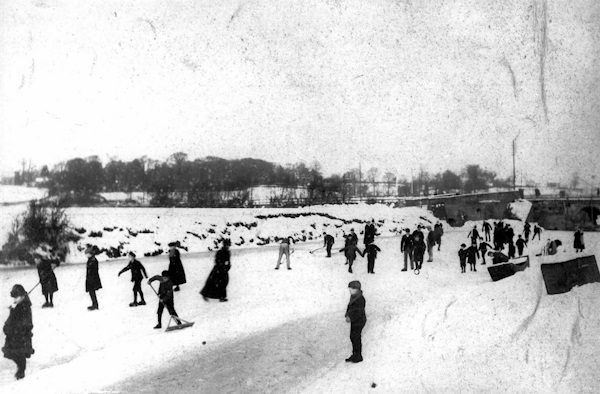
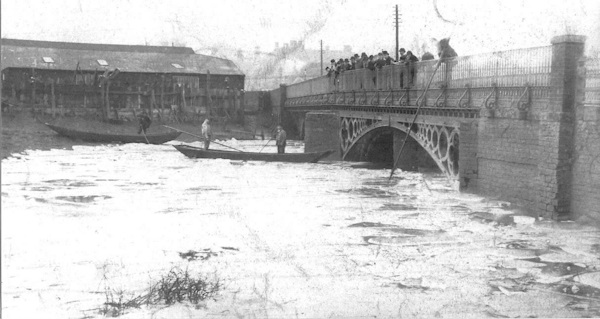
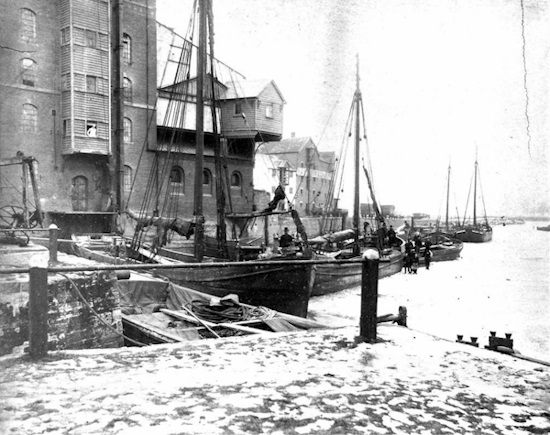
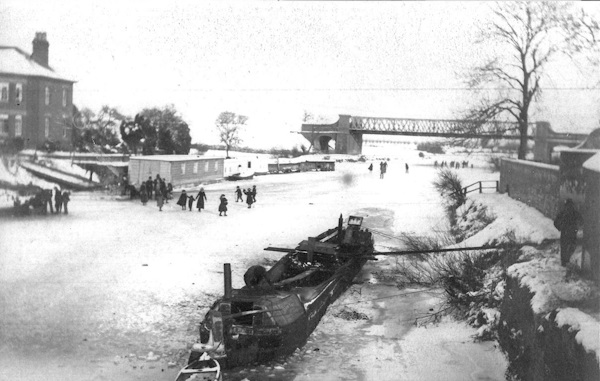
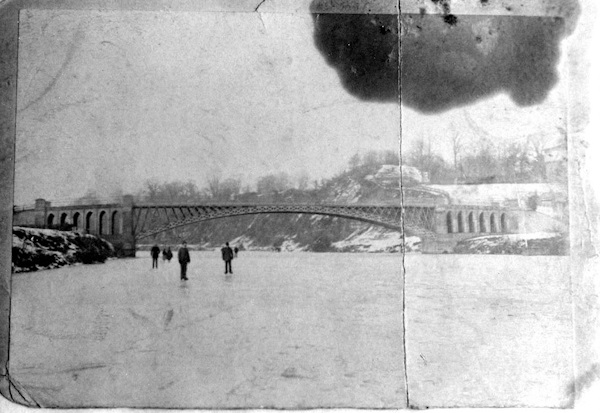
Comments